March 9-15, 2025
Springing into so many changes
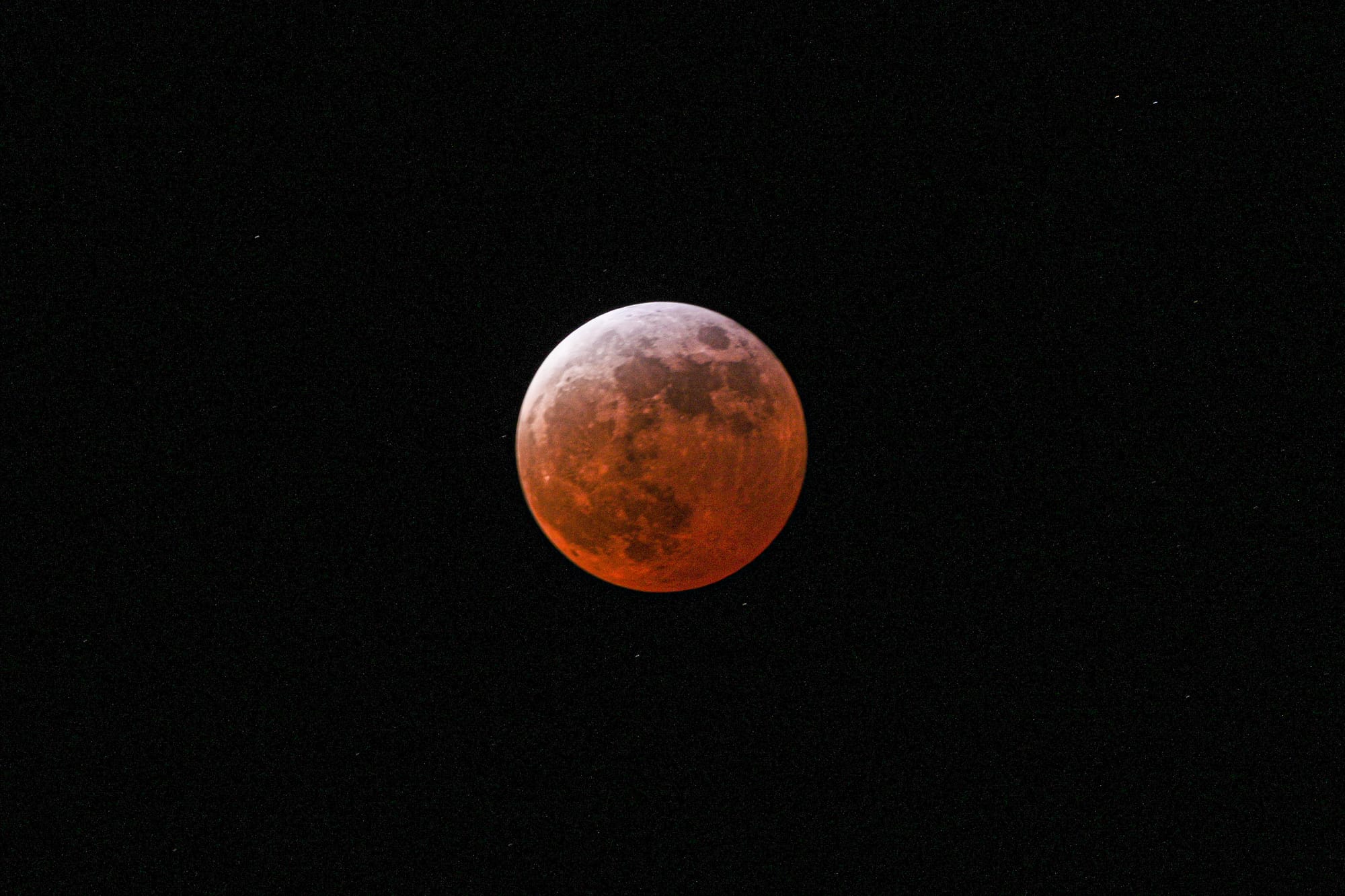
Even as deep snows still cover many areas, spring is in the air and we're on the cusp of tremendous change.
Week in Review
It's that fun time of year when we discover how much we've forgotten since last spring! Birds are arriving, with countless plants springing from the soil, and all our senses are engaged as we try to remember their names. Sometimes it's a complete mystery, and other times lightbulbs go off as long-forgotten names fall into place.
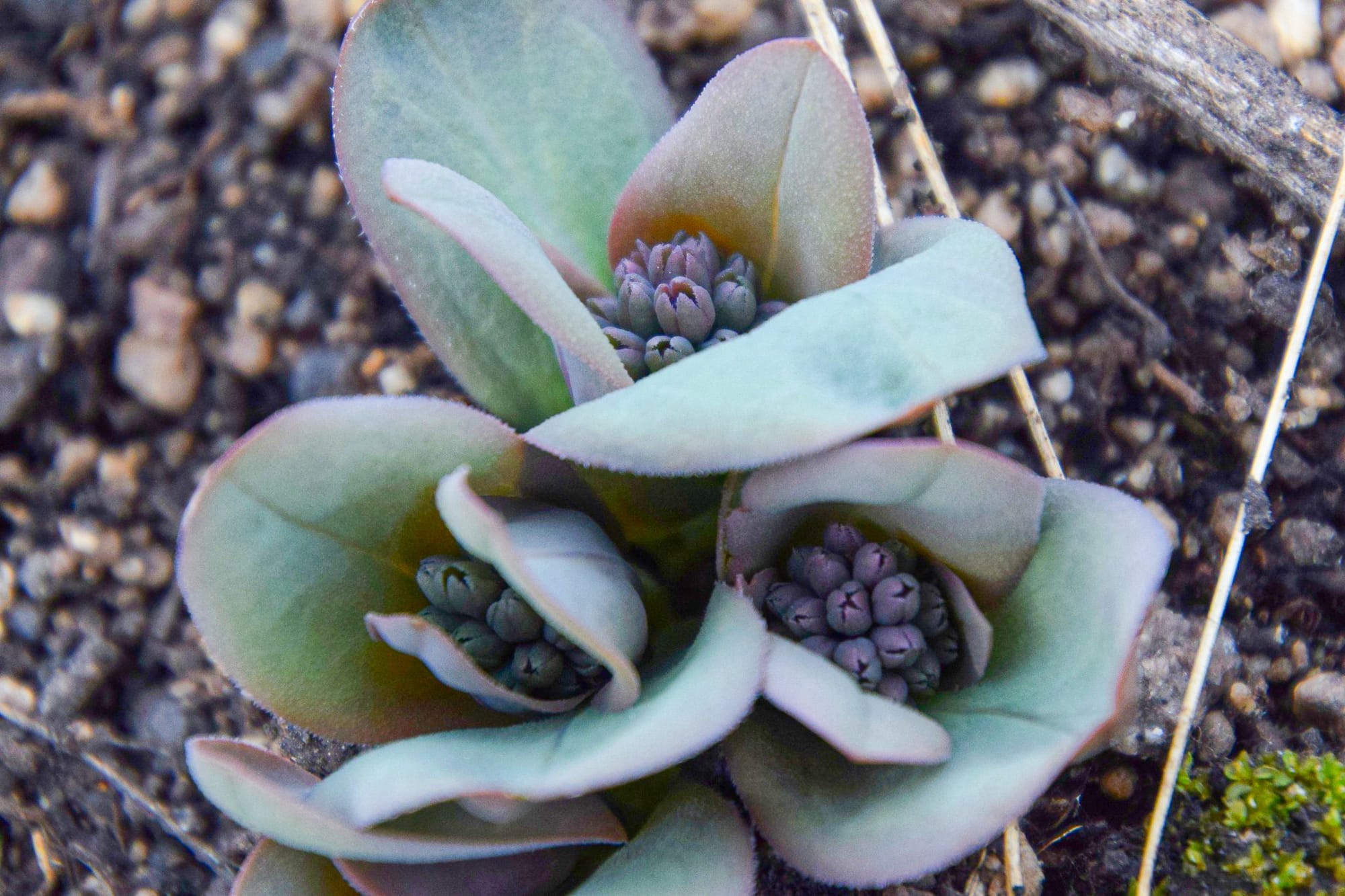
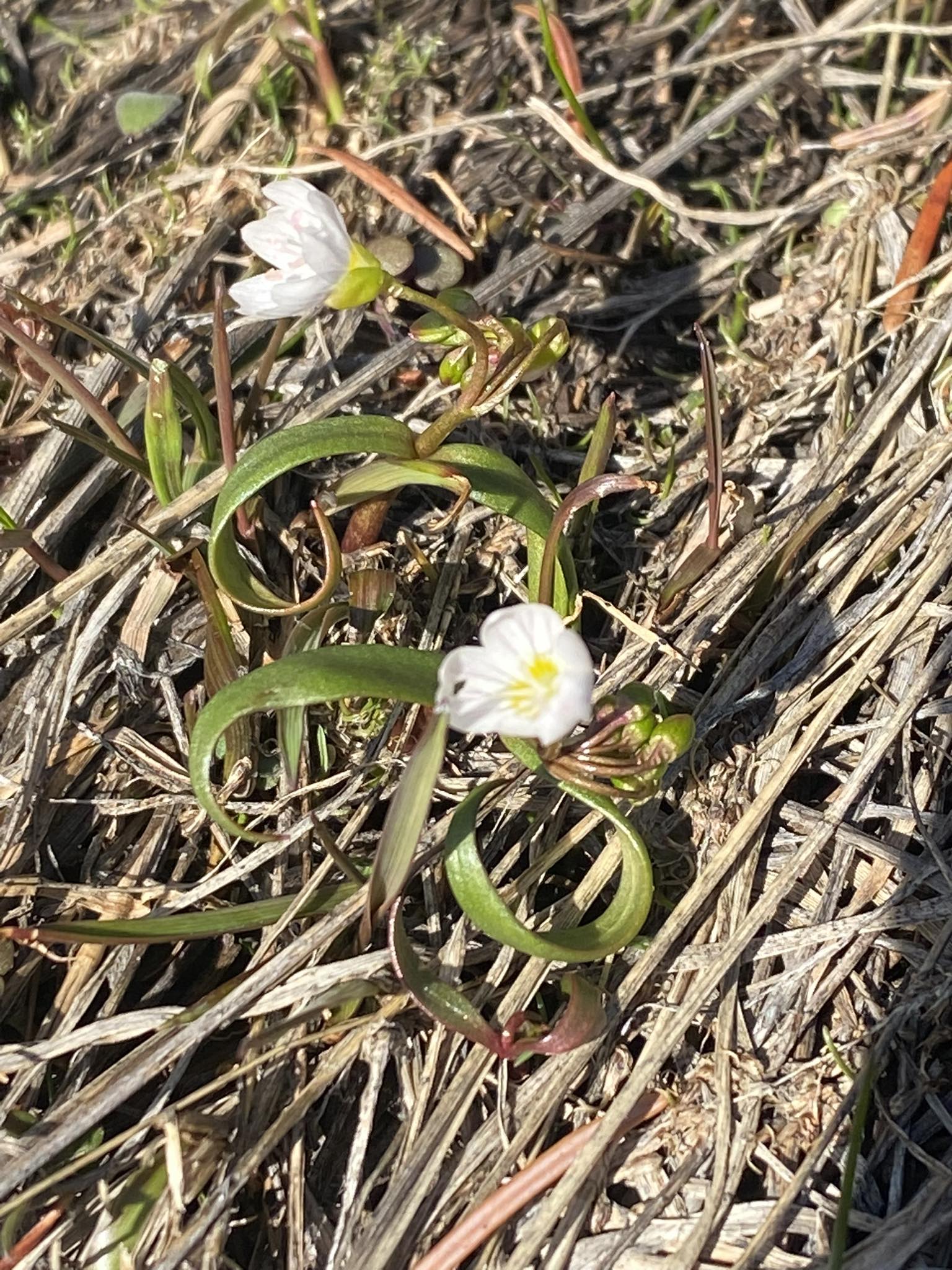
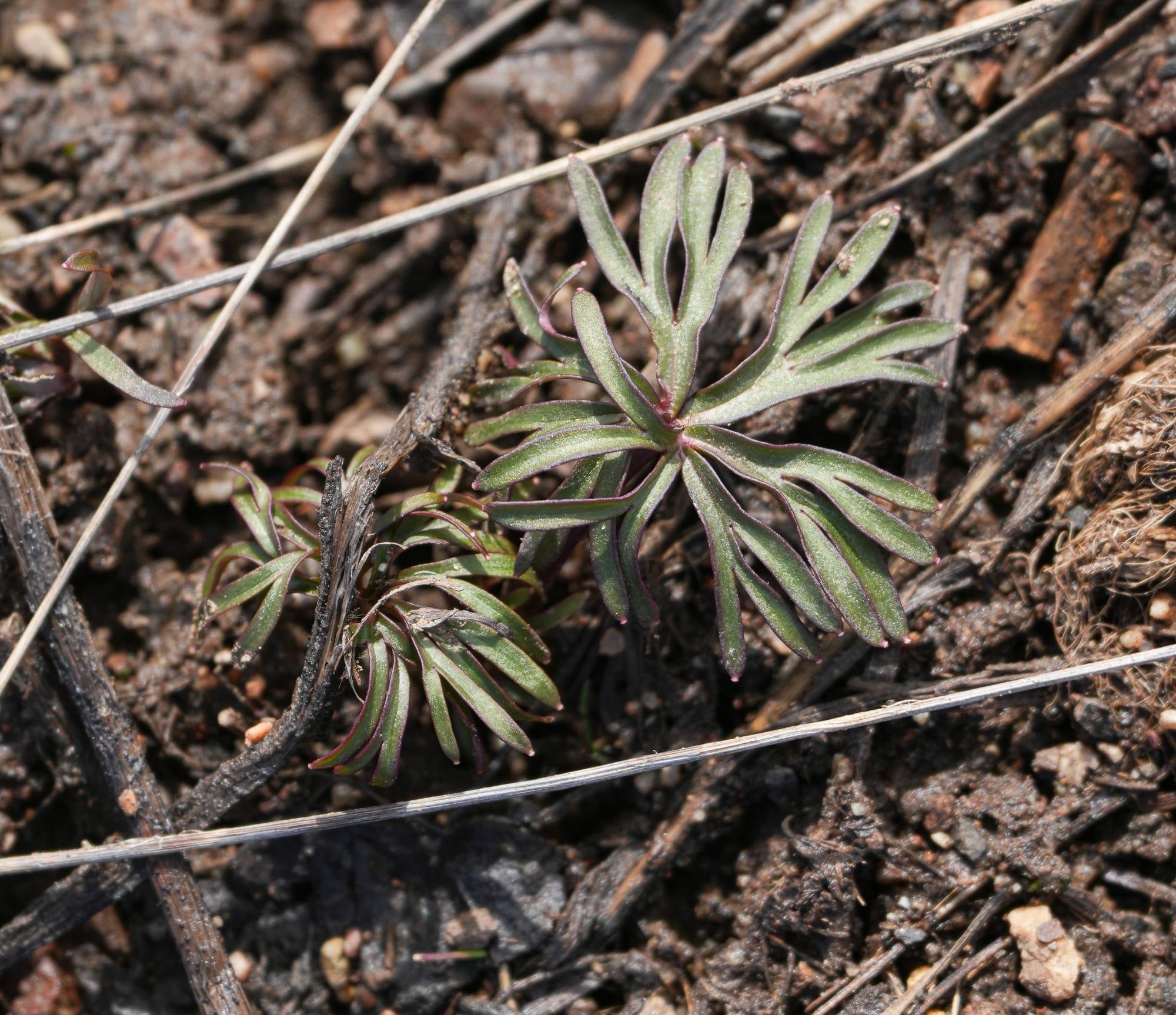
Even as a crop of hardy little plants are already emerging from the soil—sometimes mere inches from a snowbank—a few trees have just started to produce new leaf buds.
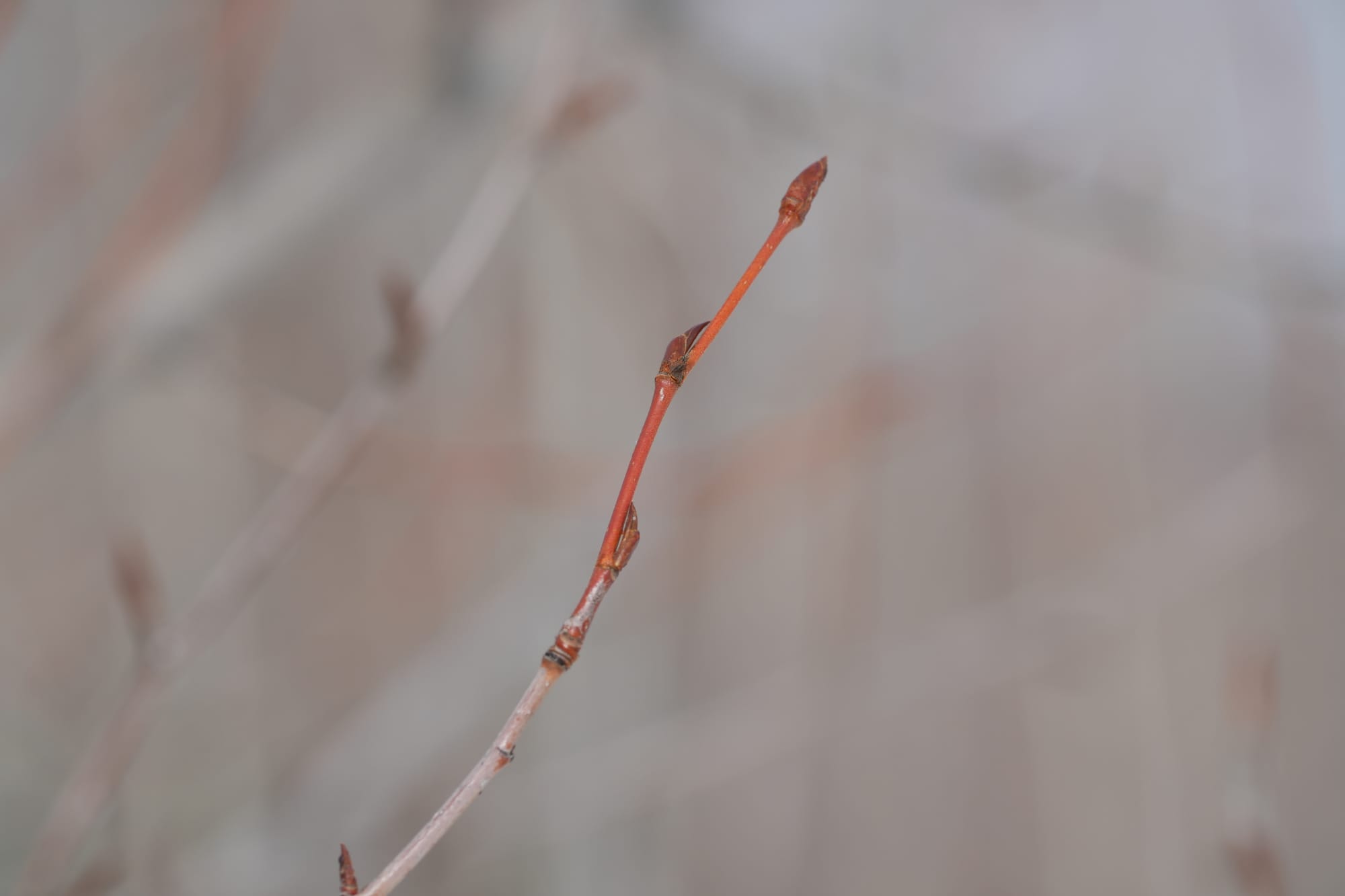
At the same time, other trees are producing copious crops of catkins before leaves are out in full force. Catkins are remarkable structures and represent an innovative flowering strategy, but did you know they are also critical for the health of our rivers? If you're curious, you can read more about this story in my Lukas Guides newsletter.
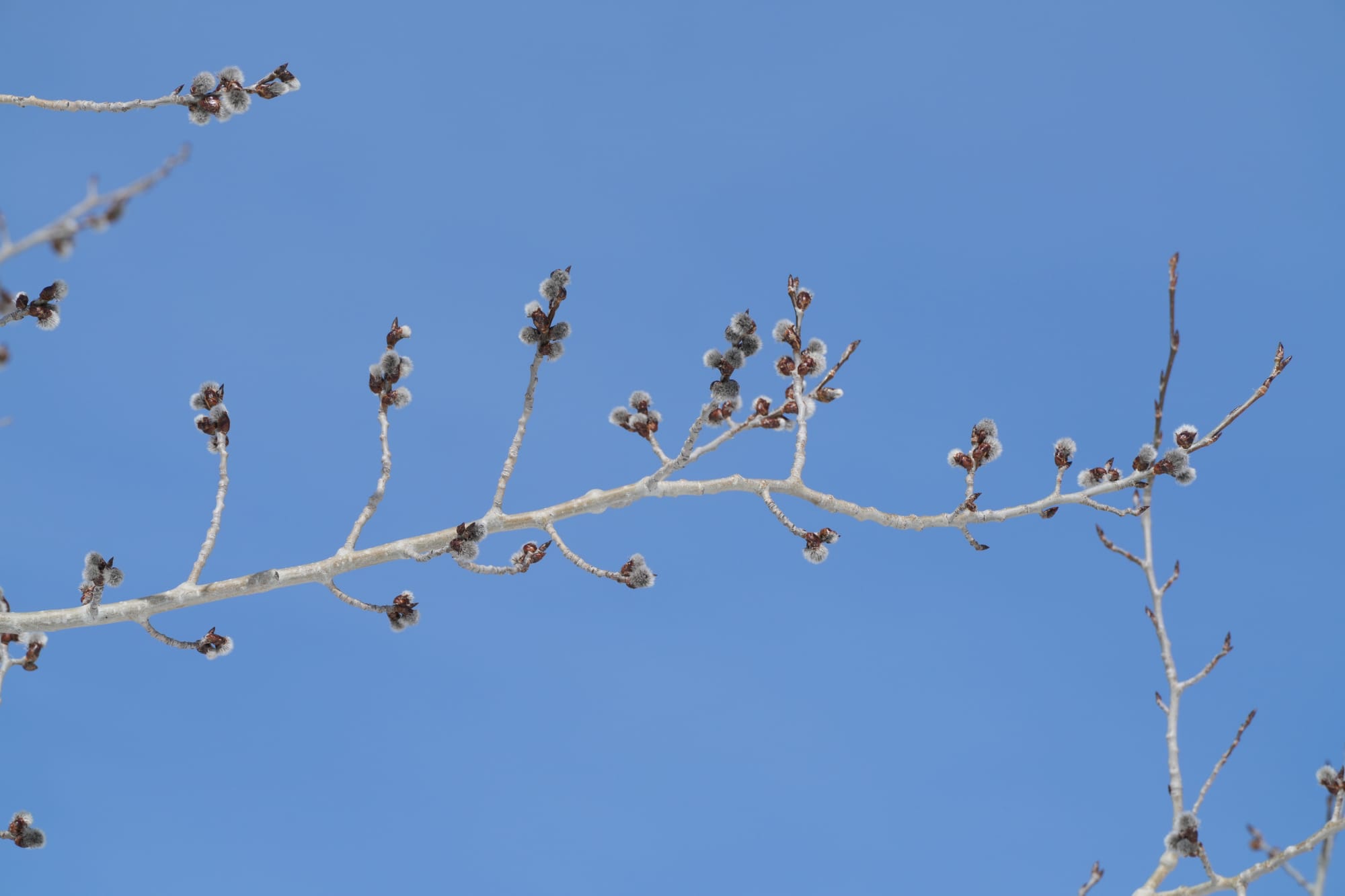
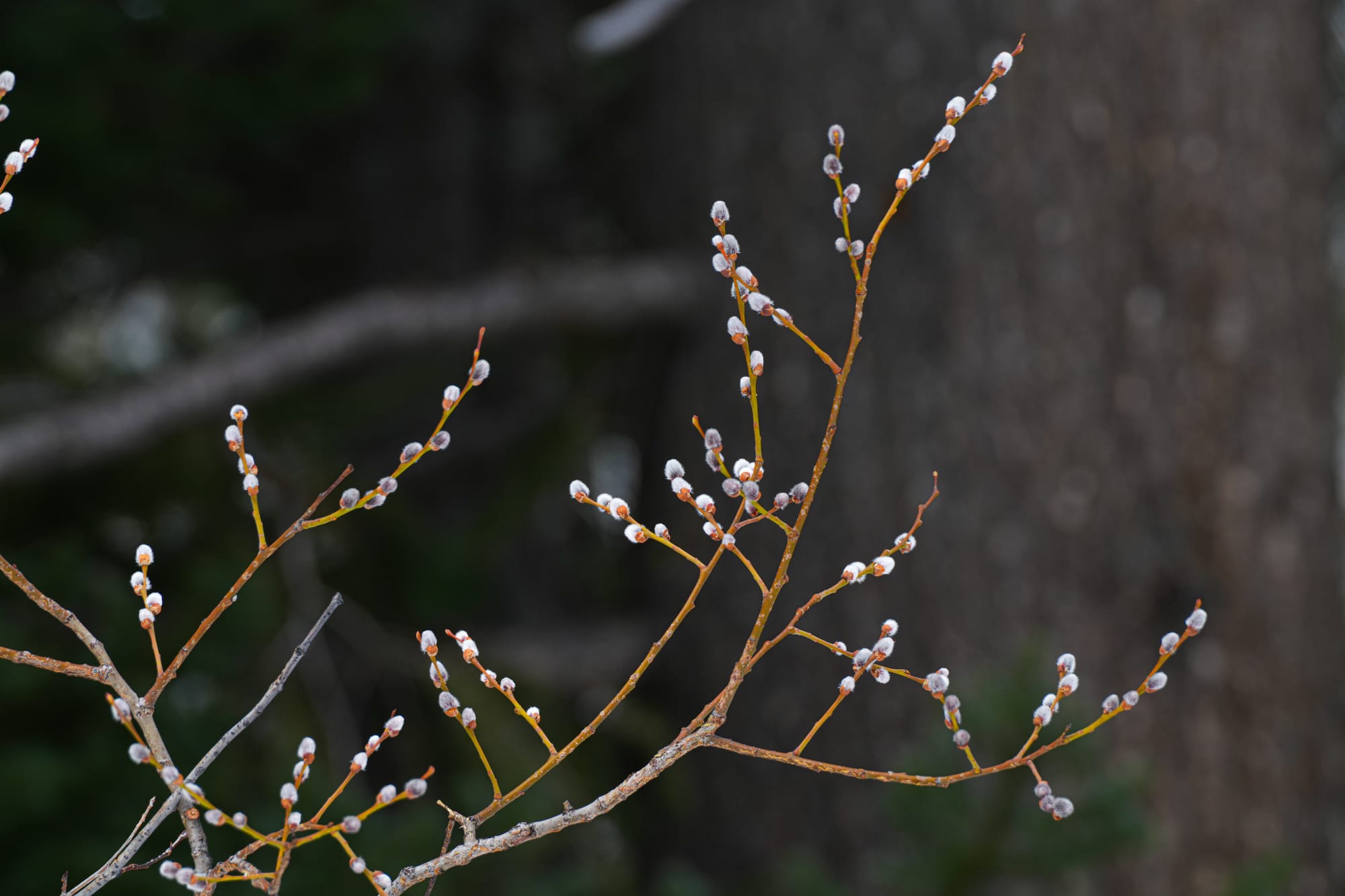
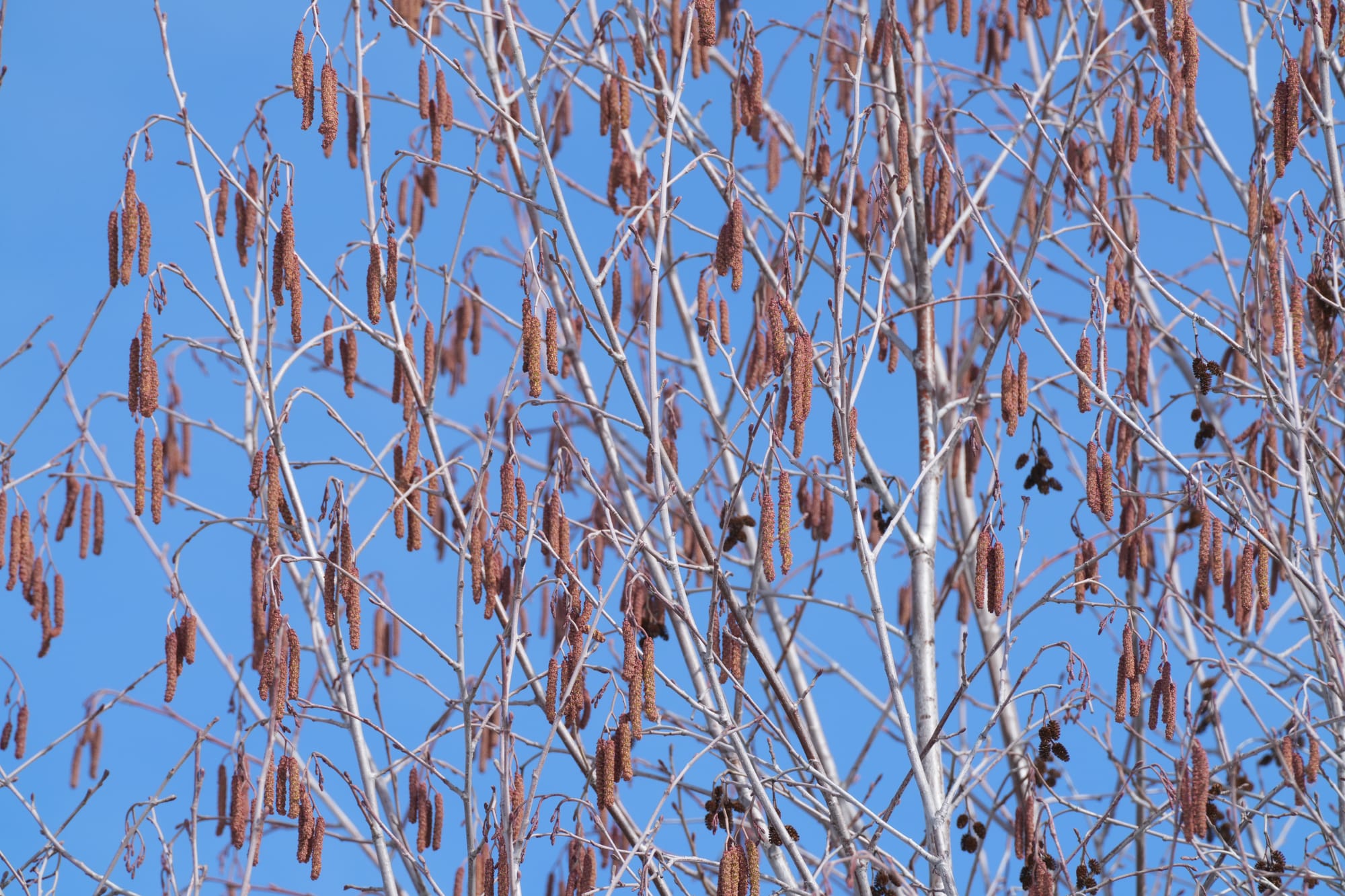
Aspen, willow, and alder catkins are everywhere right now. Photos by David Lukas
While looking closely at emerging plants, I've also been noticing a few insects, including the first fly of the year on March 13. I'm guessing this is one our nonnative flies, but I'm not entirely sure.
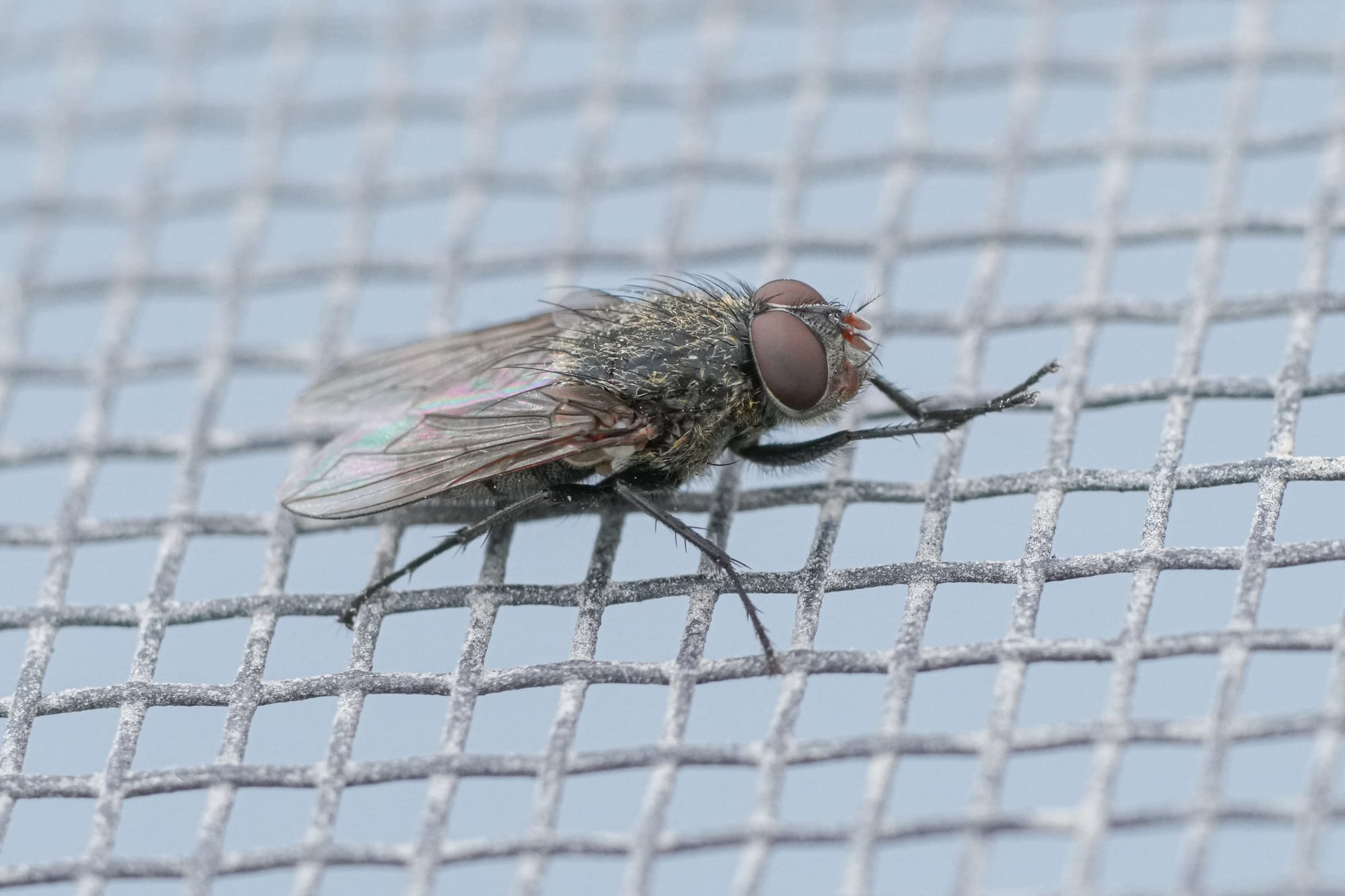
There was also a wolf spider wandering around on the snow. It was likely looking for food, but notice the two reddish palps in front of its face? That means it was a male, so maybe it was searching for a female.
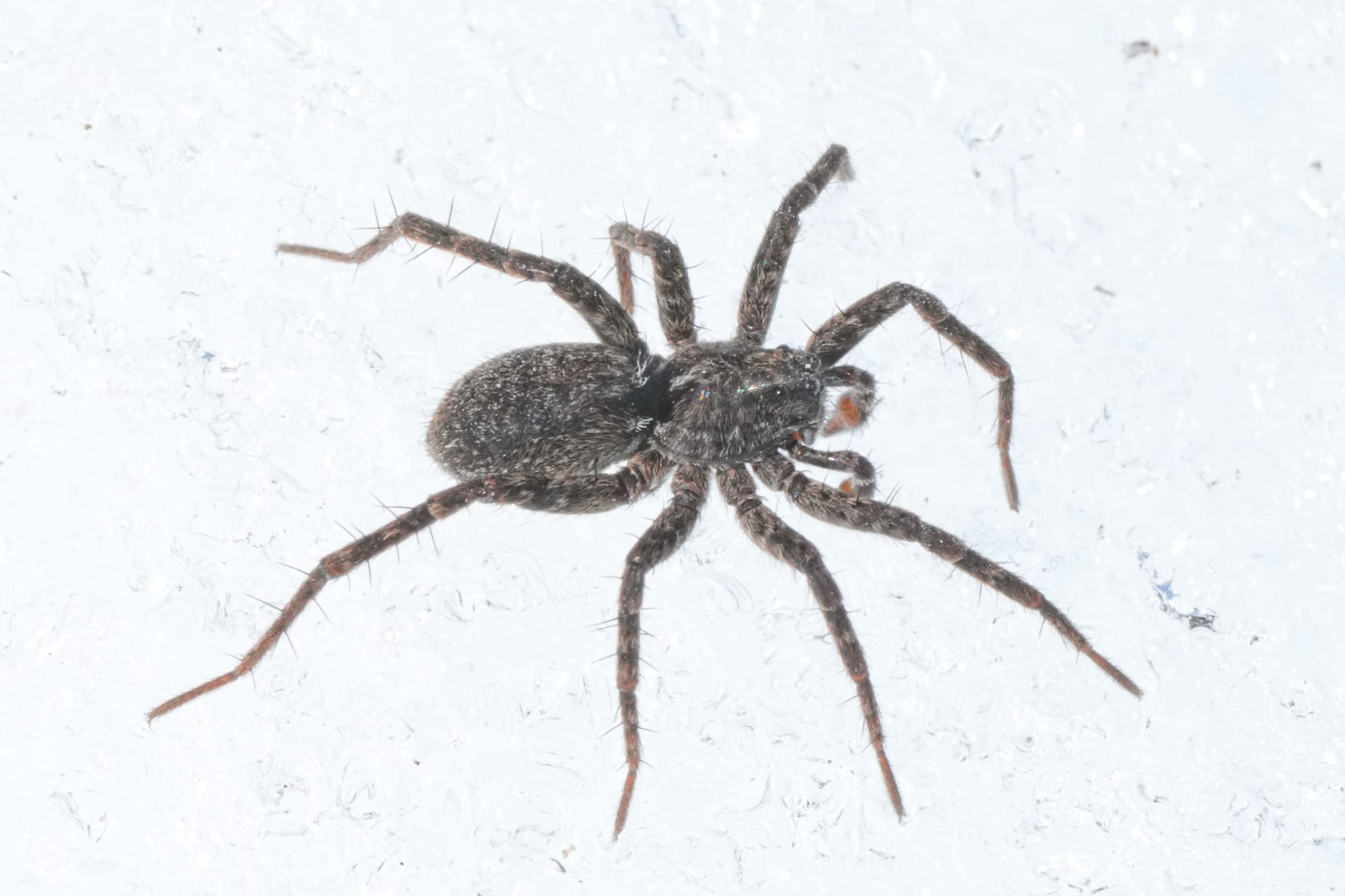
Last week I mentioned dark-eyed juncos and this week there was a noticeable uptick in their numbers, along with some other new bird behaviors.
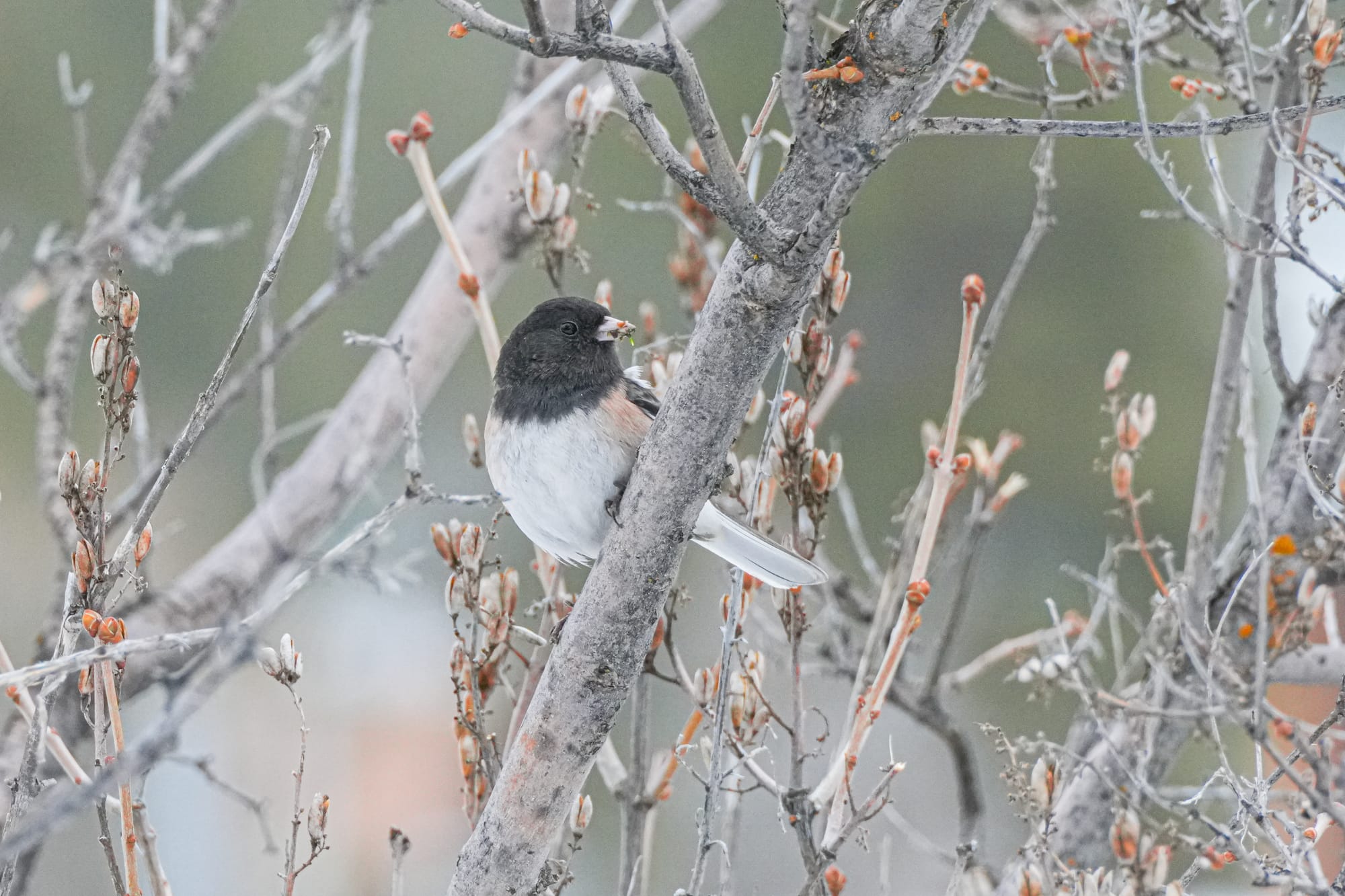
At one point loud noises caught my attention and I discovered a pair of bald eagles copulating on a branch. Pairs have already been staking claim to their traditional nest sites for at least a month but it's been too early to start breeding until now.
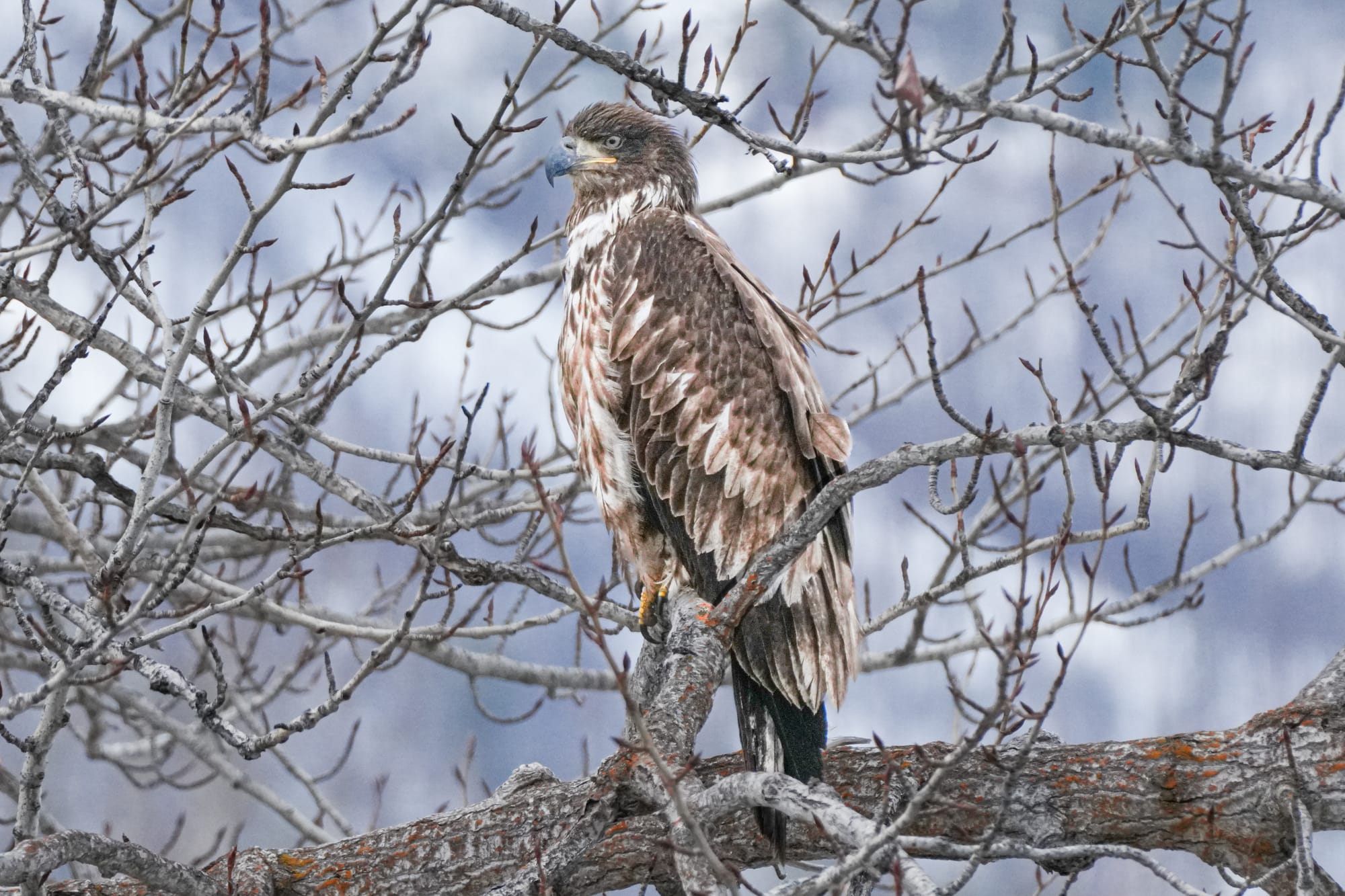
Other notable raptors have included the first and only northern goshawk I've seen all winter, and three male northern harriers that arrived on March 13. The harriers are new migrants that need open ground to find voles and mice, and it's telling that males are arriving to begin establishing territories before females show up.
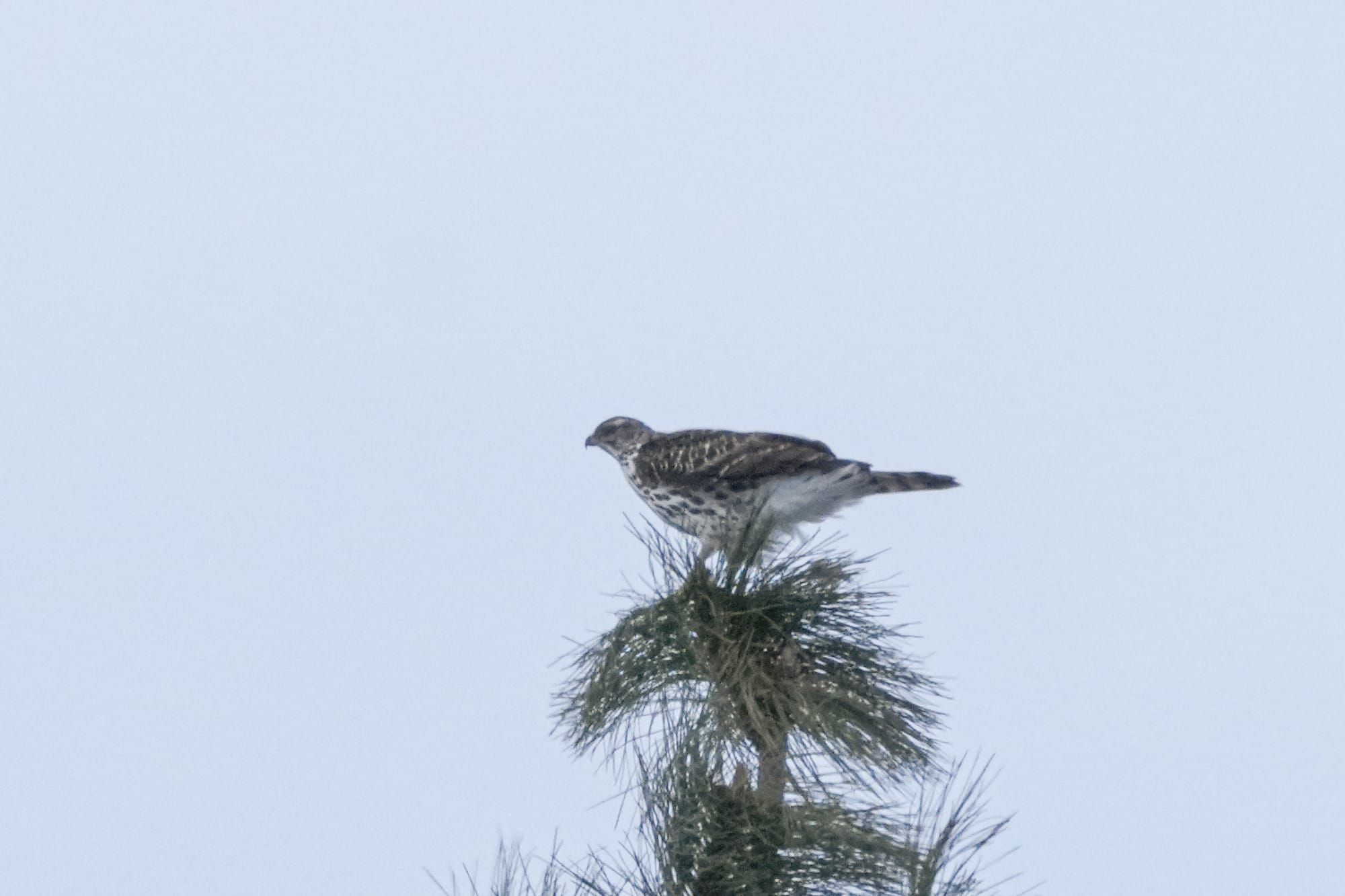
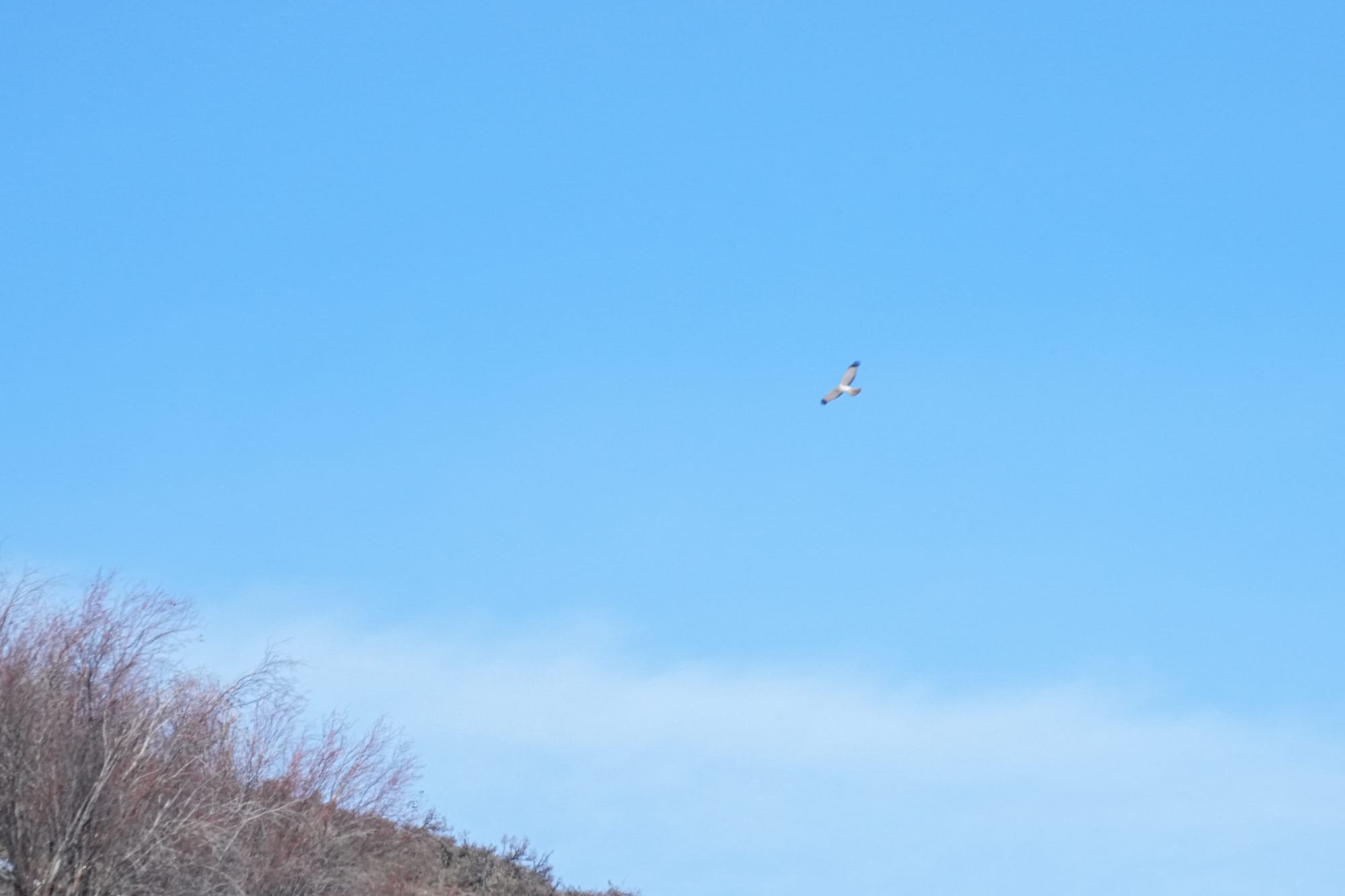
One sign that we're on the cusp of seasons was seeing a northern shrike at the same moment as the first western meadowlark of the year was singing. Shrikes are winter residents that head north to breed, while meadowlarks are one of the most highly anticipated singing birds of the spring.
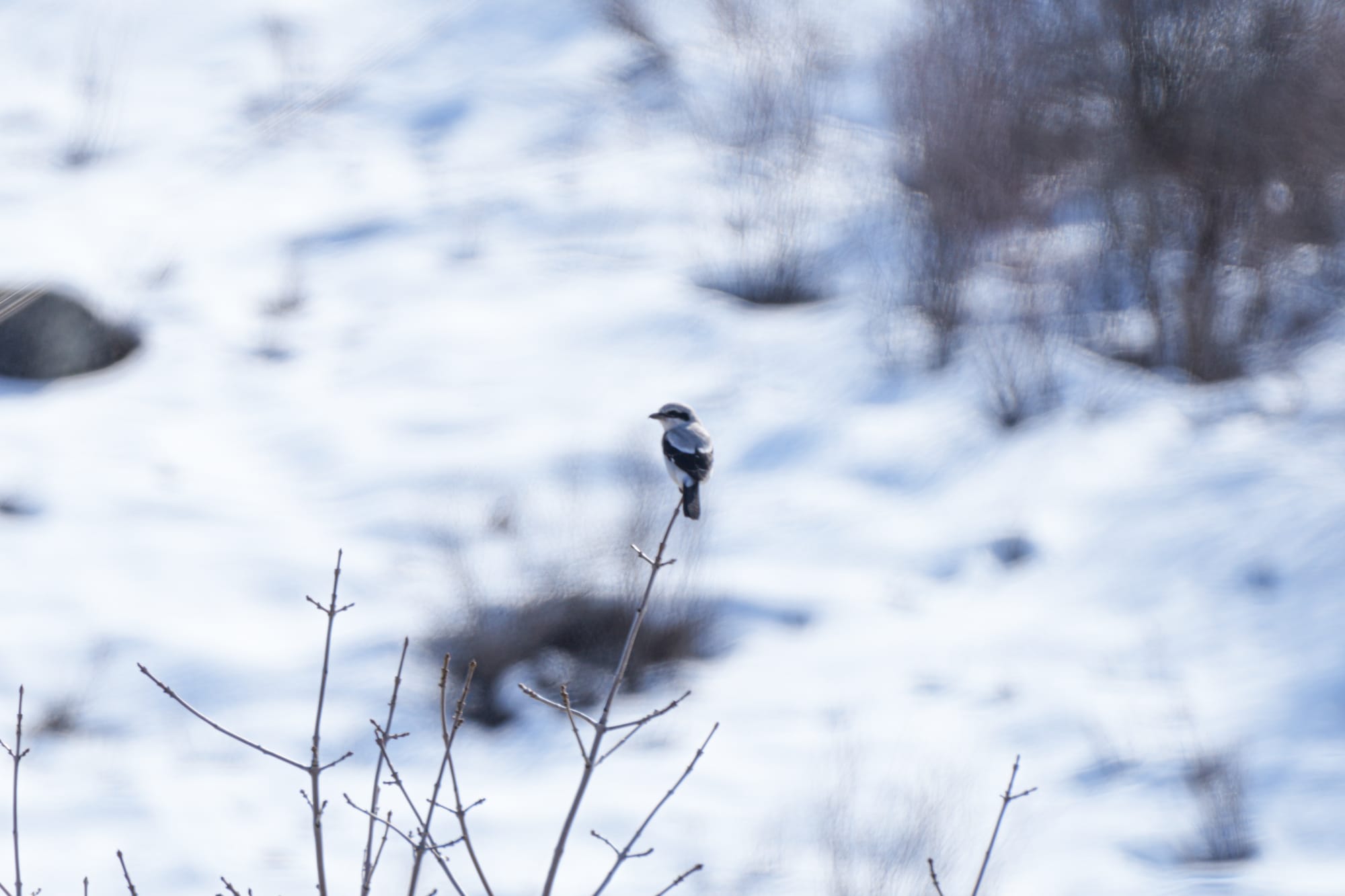
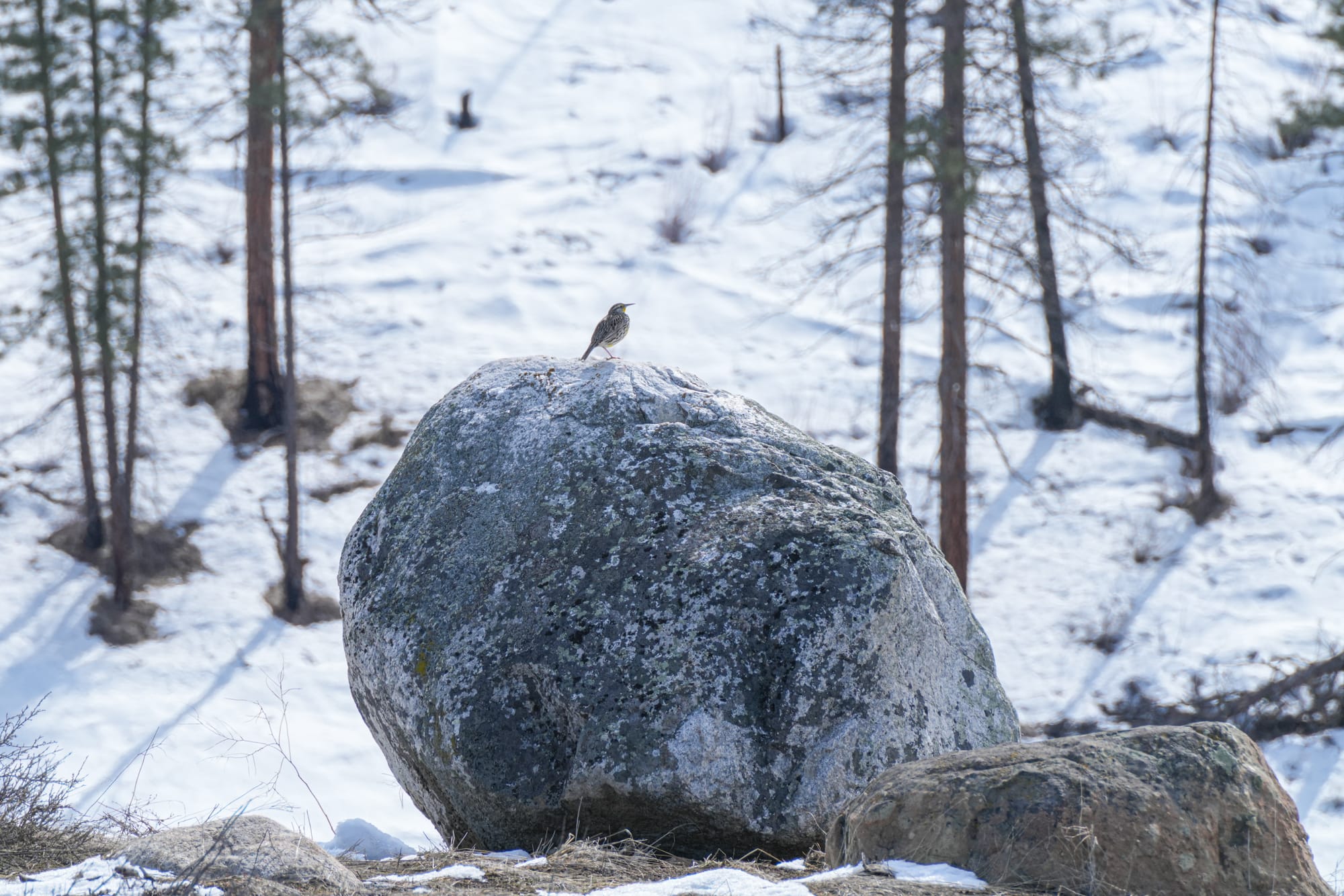
A meeting of the seasons: a winter shrike and a singing meadowlark. Photos by David Lukas

Check out this clip of wolves in the Methow Valley on March 14!
Observation of the Week: Snow Mold
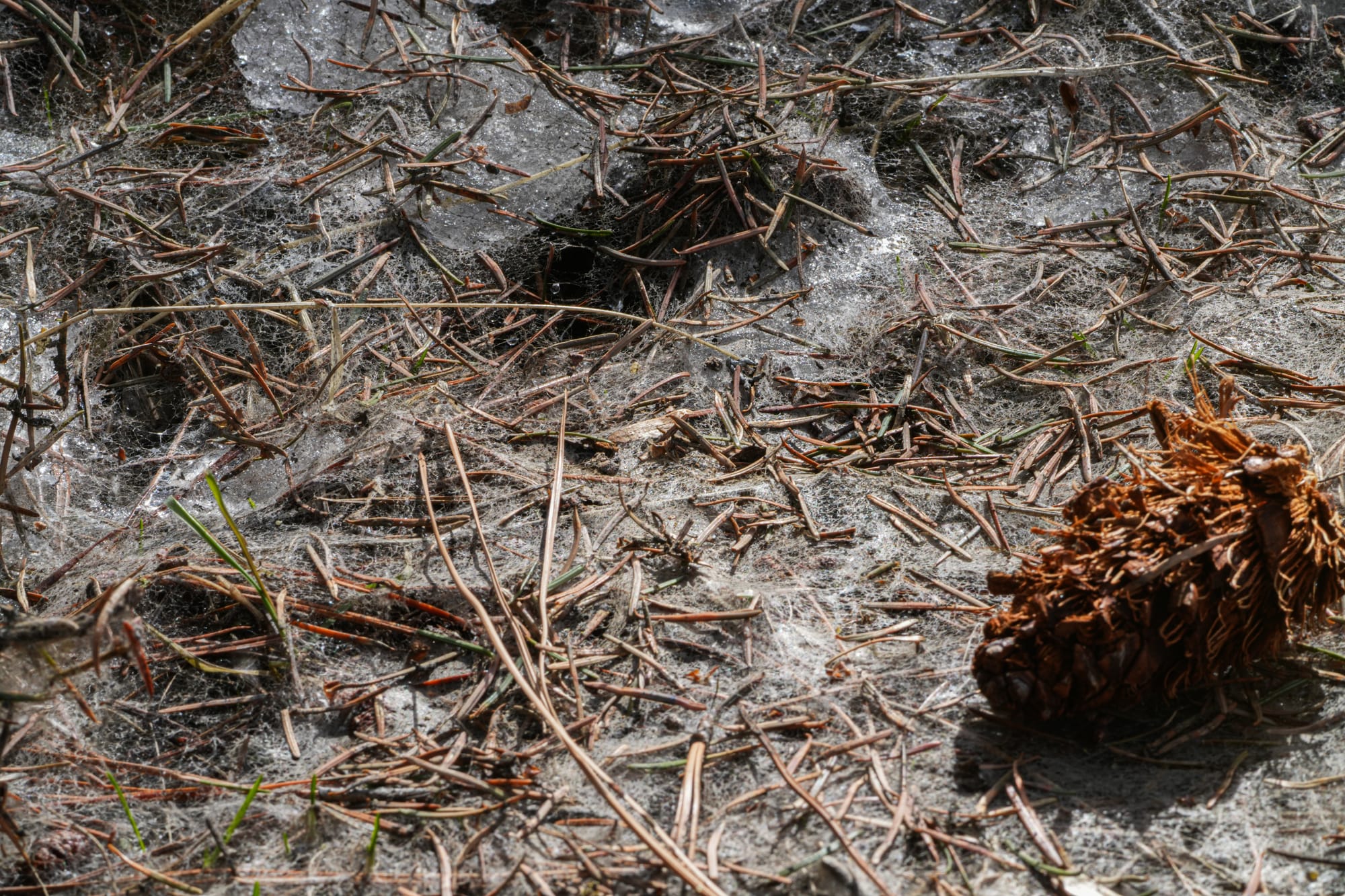
As the snow starts to melt you may be noticing thick white "cobwebs" covering dead leaves and conifer needles and wonder what you're seeing.
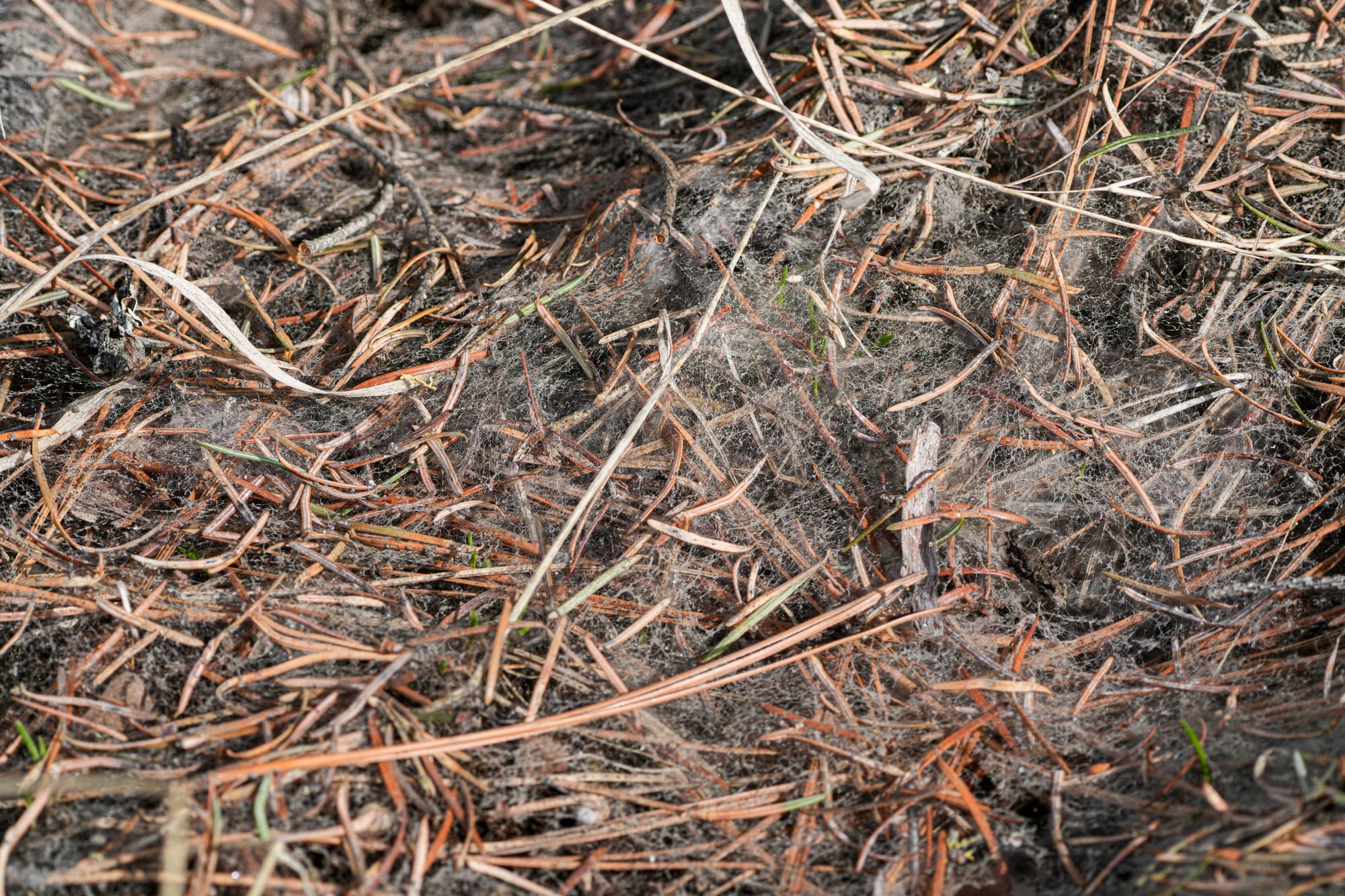
What you're seeing are snow molds that have been hidden under the snow all winter. And, while they are highly visible as the snow melts, they quickly produce spores and die as soon as they're exposed.
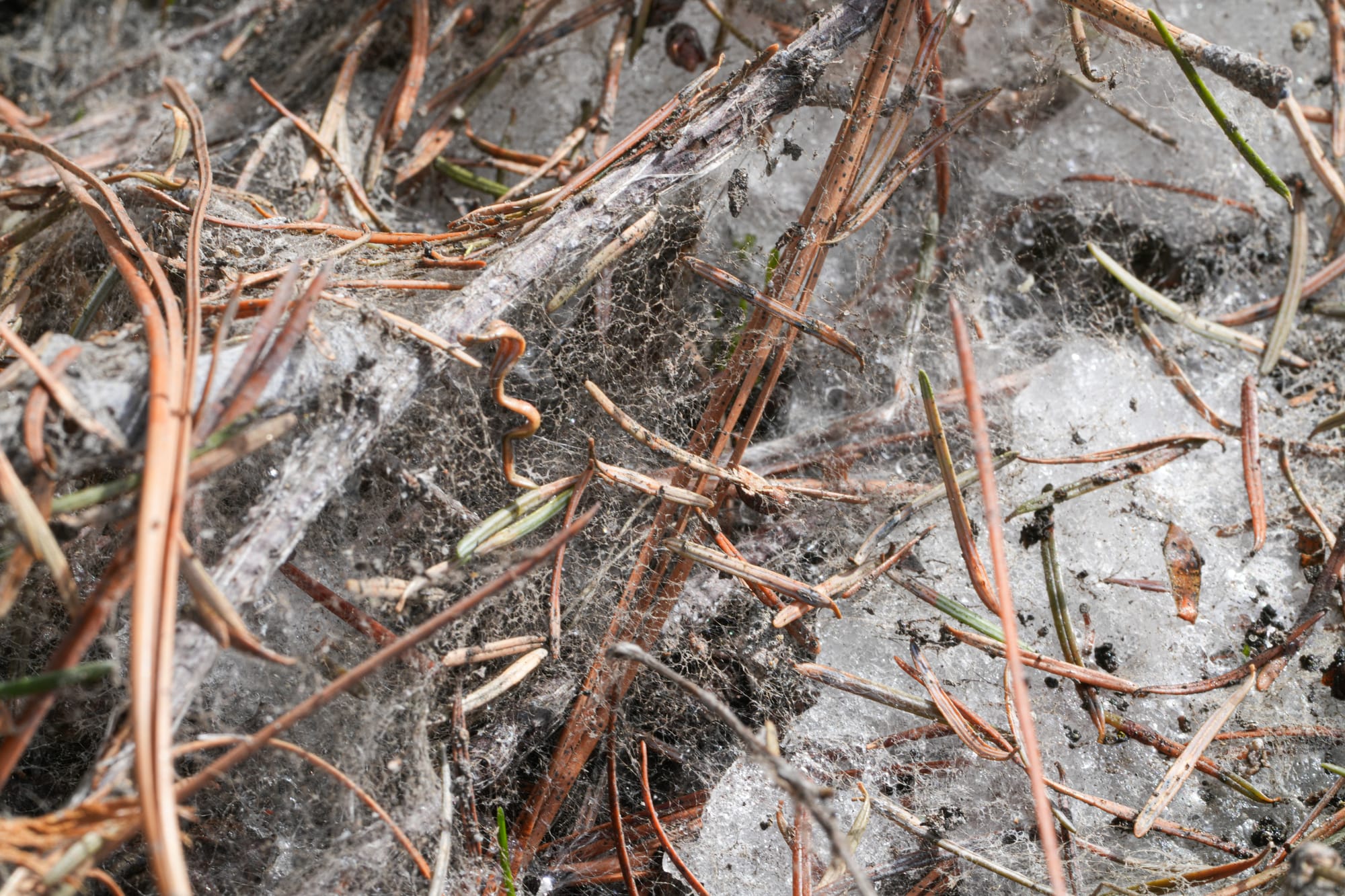
Snow mold is a general term for plant diseases that thrive under the snow, and more precisely they are a broad range of little-studied fungi that attack dormant plants and decaying organic matter during the winter.
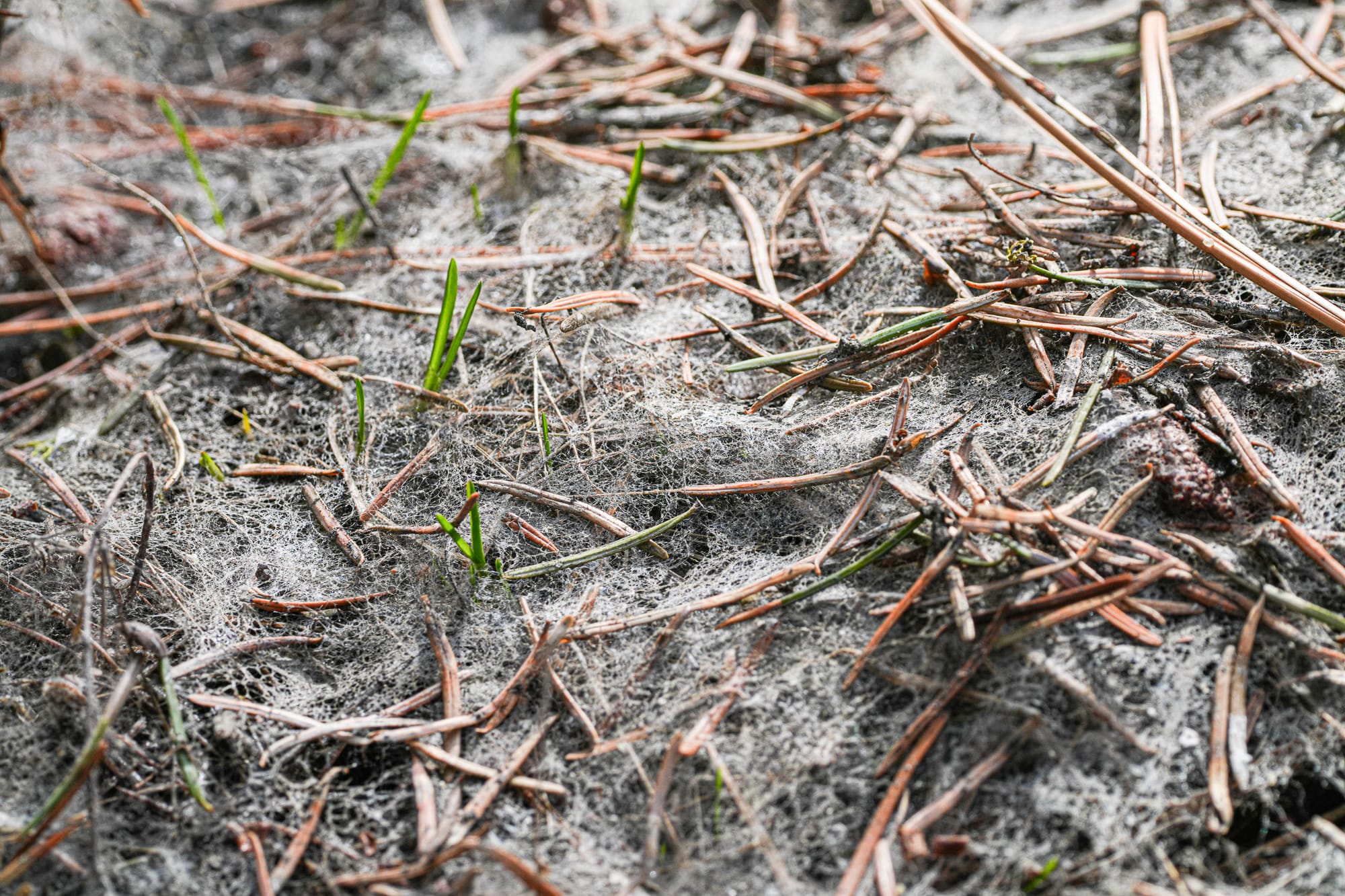
In the late winter, as snow starts to melt and release trapped nutrients, snow molds explode in size in the presence of abundant water and increased sunlight. A single spore can grow to cover two square feet in a matter of weeks and there may be thousands of spores in a small area.
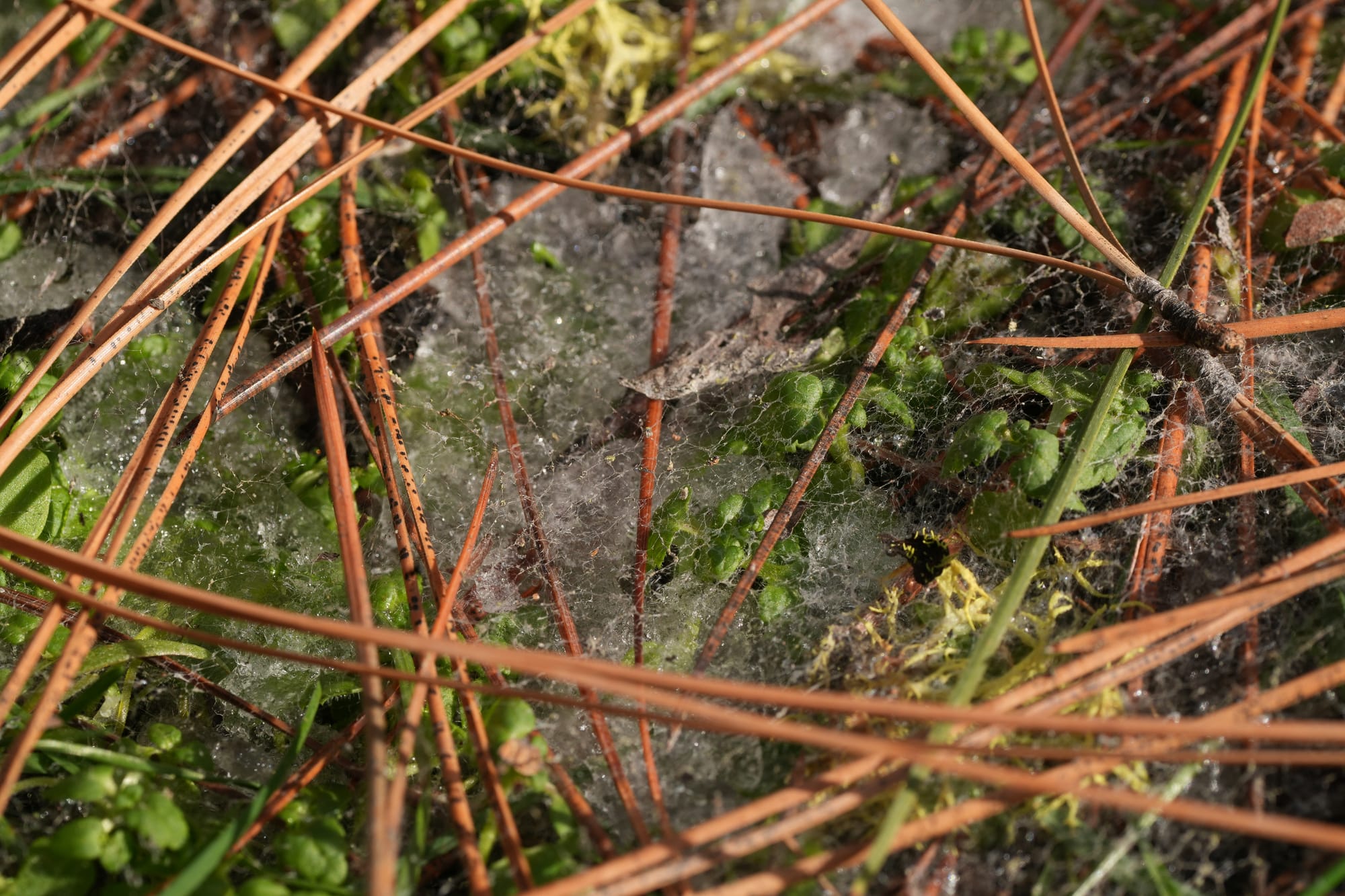
Snow molds can cause issues for lawn grasses and agricultural crops, but they are important in natural ecosystems because they convert decaying organic matter into essential minerals for plant growth and may play an underappreciated role in global biogeochemical cyles.

